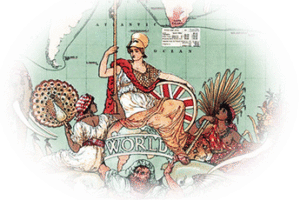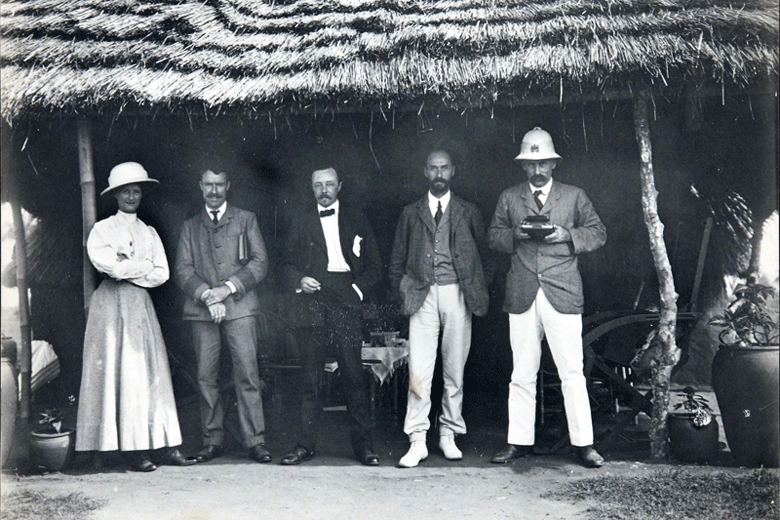Where it all began
Just about everybody loves a Bloody Mary. There are a few versions of how this spicy cocktail came about, but it was most likely created in New York City in 1934 by a bartender named Fernand Petiot. Whether he used Tabasco® hot sauce to create Bloody Marys is a matter of speculation. However, in its original form, the cocktail certainly contained cayenne pepper and black pepper. Thus, once Bloody Marys started becoming popular, it is not hard to imagine bar staff using Tabasco®. to make them. Tabasco® had already been available in the United States at that time for well over sixty years
Bloody Marys almost certainly would have found their way to the United Kingdom after becoming popular in the USA. After all, the British travelled (whether as businesspeople or tourists) to the United States all the time. It is probable these visitors would have brought the recipe back to the UK. If they had (and they almost certainly did), they wouldn’t have needed to look hard to find Tabasco®. It was already here. Tabasco® had already been in the United Kingdom for some time. It had arrived in England in 1874
Now, that is a sobering thought (if you will excuse the pun). For Tabasco to be already here must have meant it had a following. How was it that a country known for bland food felt it needed a hot sauce as part of its cuisine?
The probable answer is that chefs had introduced it as a subtle way of adding flavour to sauces. Whether this is accurate is unclear. But, be it as it may, the popularity of the Bloody Mary would soon mean that Tabasco would find another home. It would become part of a cocktail cabinet of the dinner party set and in UK cocktail bars. . The start of the history of hot sauces in the United Kingdom had begun.
That was then, but ……

The British empire
Using hot sauce in the UK at that time might have been unusual, however, roll the clocks forward eighty-five years or so. Now it’s more likely that the average household will at least have one bottle (if not more) of hot sauce. It has become extremely popular. Everywhere you look, hot sauces are to be found. Indeed, so much so, sales of hot sauce in this country now even exceed those of ketchup.
So how did this happen? How did hot sauce rise from relative obscurity to what it is this day and age ? How did something that only thirty years ago suddenly rise to the popularity levels seen currently? Surely there must have been underlying factors that contributed to hot sauces becoming what they are today.
And there certainly were. It didn’t just happen! To illustrate this, we need to go back to the days when Britain was a colonial power that ruled about twenty five percent of the world’s land surface
It was a time when the British influence stretched to every part of the world. Indeed. At one time, it was said the sun never set on the British empire. The country had colonies and overseas territories in Africa, Northern America, Asia, Australia, and the Middle East. With so many regions under its control, Britain’s power and influence knew no bounds
However, it was one thing building an empire, it was something else keeping it. Britain needed loyal patriots to be in its territories to keep them British. Thus, Britain encouraged its citizens to settle and make a life in these far-off places. And settle they did, in their hundreds of thousands, perhaps even millions [ source : Cambridge Core ]
These settlers, no doubt, would have been introduced to local cuisine. This cuisine would have been far removed from what they had been used to before. It would have been spicier, used unfamiliar ingredients, and cooked in a very different way.
This, however, didn’t prevent them from developing a taste for this new and exciting food. They loved it. It was a pivotal moment in the history of hot sauces and spicy foods in the United Kingdom.
The colonies
West India & the Raj
As far back as 1643 Pepperpot, which was made by Arawak Indian enslaved people working in kitchens of sugar cane plantations in Barbados became a firm favourite. The English sugar barons loved this spicy stew made with Chillies, vinegar, spices, meat, and cassareep (a thick black liquid made from cassava root) so much so, it could be found bubbling away on a stove in almost every plantation kitchen.
Similarly, the sugar cane plantations owners in Barbados and other parts of the Caribbean would also later love the foods and hot sauces made by their (mainly) West African slaves. These enslaved people had come from countries where spicy foods were traditionally eaten. By necessity, they adapted their cooking to local conditions and ingredients. The result was fusion food that was to shape the character of West Indian cuisine forever
This was not an isolated phenomenon. British tastes were also changing in other parts of the empire as well. Where Brits might have previously settled for meat and two vegetables, their palates now sought something more exotic. It was the start of things to come
Another important chapter in the history of hot sauces in the United Kingdom was when Britain colonised India. The Raj (the British rule in India from 1858 to 1947) was an event that shaped the taste of the Brits for exotic foods. The expatriates who made up this administration became such fans of curries that they even began eating them for breakfast. Kedgeree for example (which has its origins in the Indian khichuri) was adopted by the expats as a breakfast favourite. It consists of smoked fish, rice, eggs, and curry spices. Pilau and mild curries were also loved, as were a wide variety of Indian pickles and sauces. It was a love of these foods that they took back to the United Kingdom when the Raj ended
Similarly, in Malaysia, the expats living in the country developed a taste for spicy food and hot sauces. So much so, that local entrepreneurs began catering to this demand. One particularly enterprising gentleman of Indian descent – A Mr Lingam – developed a Chilli sauce specifically to appeal to the English palate. His products were an immediate hit with the colonial expats, and before long his sauces had a great following. So much so that he decided (on the advice of an expatriate) to anglicise the brand name of his product to Linghams. No more needs to be said. History speaks for itself
Africa and beyond
West Africa & the Caribbean
Colonisation in Africa was another event that had an impact on the history of hot sauces in the United Kingdom. Expats became fans of spicy foods and hot sauces in the once British colonies of Nigeria, Ghana, Gambia in West Africa. After all, the Africans from this region are great lovers of spicy food. The West Africans had been introduced to Chillies by the Portuguese, and they had masterfully incorporated them into their cuisine. It was so good the British had no chance, but to become fans
The influence that West African enslaved people had on the cuisine of the West Indies meant that food and hot sauces in former British colonies and territories like Jamaica, Barbados, Guyana, Grenada, Dominica, and Antigua and Barbuda had a distinctly spicy character. There is no doubt that even after the abolishment of slavery, expats who lived and worked in these colonies, whether as civil servants or the private sector, would have eaten this cuisine. Indeed. Not only would they have eaten it, but they would have regarded it as something that was hard to do without.
territories like Jamaica, Barbados, Guyana, Grenada, Dominica, and Antigua and Barbuda had a distinctly spicy character. There is no doubt that even after the abolishment of slavery, expats who lived and worked in these colonies, whether as civil servants or the private sector, would have eaten this cuisine. Indeed. Not only would they have eaten it, but they would have regarded it as something that was hard to do without.
There are other examples, but one more significant factor needs to be considered. This factor is the armed forces that were based overseas. With colonisation came the need for a military presence. Members of the armed forces were sent all over the empire. These military, air force and navy personnel became fans of hot sauces, for no other reason than to spice up their often-bland rations. Whether this was in the mess or out on patrol, soldiers, sailors, and the flying service would have had a bottle of hot sauce not far from hand.
Finally
With all these factors together, it is not hard to imagine that expats and the armed forces were at the forefront of spicy food, and hot sauces becoming popular in the United Kingdom. They had learned to love these foodstuffs in the overseas colonies and brought this fondness home with them.
The only problem, as most of these expats and soldiers were to discover, it was nigh on impossible to replicate the taste they had acquired for spicy food overseas on home turf. The ingredients were simply not available. The demand might have been there, but it was not being met.
This, in essence, laid the foundations for what would happen in the future. However, I will have to leave it there for now. The next part of the story will be covered in a follow up post in the not-too-distant future
Image credits
Richard Simkin, Public domain, via Wikimedia Commons
The National Archives UK, No restrictions, via Wikimedia Commons
Citation
Victorian Literature and Culture , Volume 46 , Issue 3-4 , Fall/Winter 2018 , pp. 876 – 882




I never realised that Linghams was so old. I was introduced to their sauces by a friend’s 14 year old daughter, and have never looked back.
I was lucky that my parents travelled, and as my mother loved cooking she brought back recipes with her. So exciting to hear the history of the flavours I grew up with, and learn about new ones.